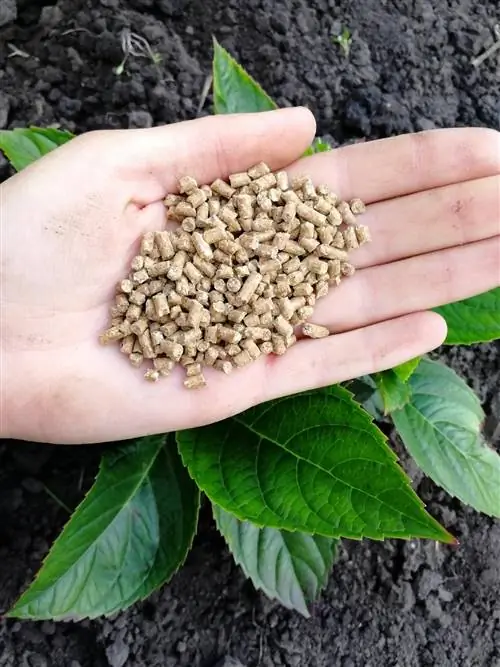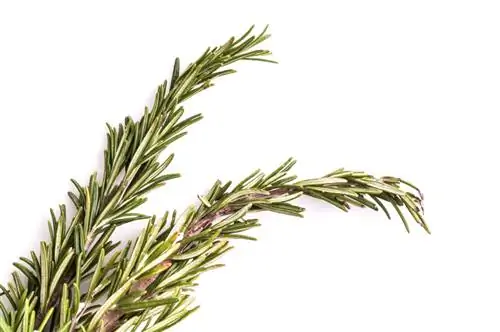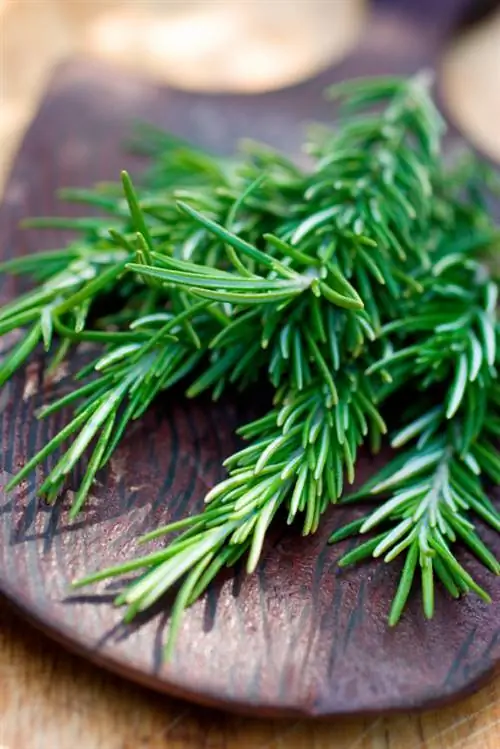- Author admin [email protected].
- Public 2023-12-16 16:46.
- Last modified 2025-06-01 06:02.
Rosemary is a real all-rounder in the kitchen. It goes well with fish, meat, vegetables as well as cheese and sweet dishes such as jam or sorbet. You can use the needles and flowers fresh and preserved

How can you use rosemary in the kitchen?
To process rosemary, harvest fresh branches, pluck the needles and add them chopped or whole to the food. Rosemary can also be preserved by drying, freezing or pickling in vinegar or oil. Always use he althy plant parts.
Processing fresh rosemary
Rosemary tastes best fresh from the bush, as it still contains the largest proportion of essential oils. However, these evaporate quickly, which is why you should not store the spice for a long time without being preserved. For fresh use, it is best to harvest whole branches and pluck the necessary needles from them. You can add the needles whole or chopped to dishes, although the rosemary must cook for as long as possible. With braised dishes, it is possible to cook whole branches and then simply fish them out again at the end of the cooking time. By the way, the rosemary flowers are also edible; they make a great impression, especially when sprinkled over salads.
Preserving rosemary
Both the flowers and the leaves can be preserved in different ways. You can dry rosemary, freeze it or put it in vinegar orAdd oil - whatever you like. However, as with fresh rosemary, you should not leave the harvested branches lying around for long. Process rosemary as quickly as possible to preserve the flavor. For this reason, drying rosemary should never be exposed to the blazing sun, as this only causes the volatile essential oils to evaporate even more quickly. But whether fresh or preserved: Only use he althy rosemary parts and ignore wilted or dried-looking twigs - you will most likely not like them. Yellow-spotted leaves, on the other hand, can be used in the kitchen without any worries.
Tips & Tricks
Older, de-needled rosemary twigs can be used as shish kebab skewers: simply pierce cubes of meat, fish, vegetables or cheese and skewer them onto the rosemary twig. The studded skewer is then drizzled with olive oil and cooked on the grill or in the pan. The typical rosemary aroma penetrates the food through the branch.






